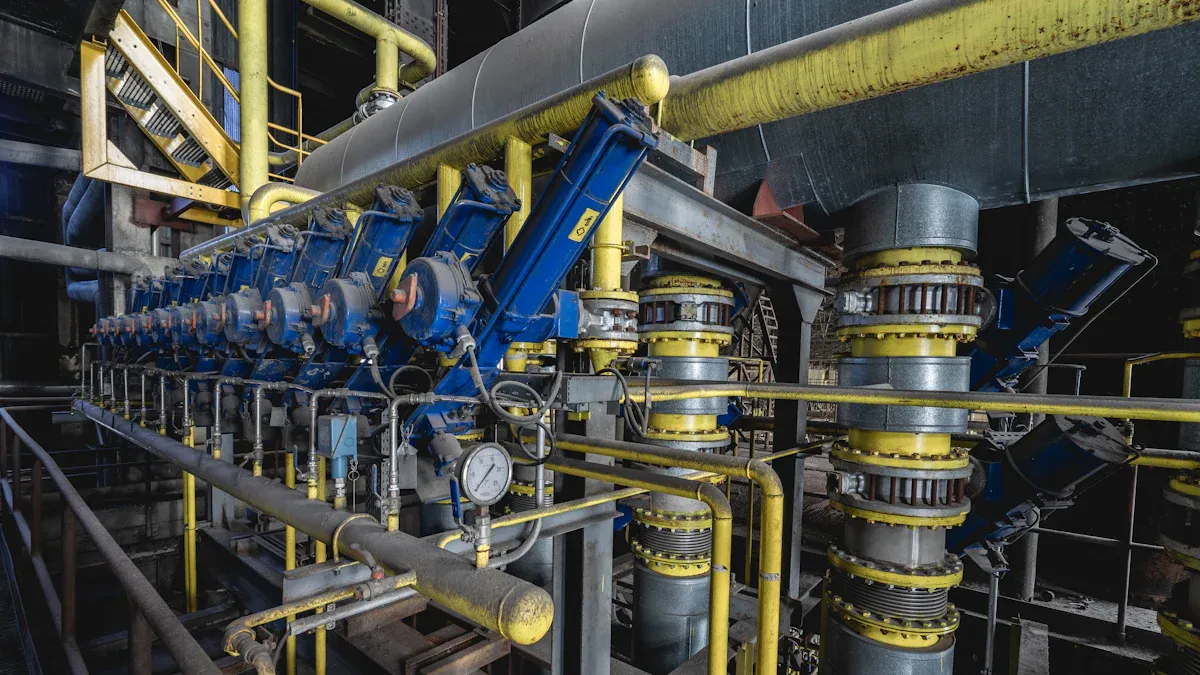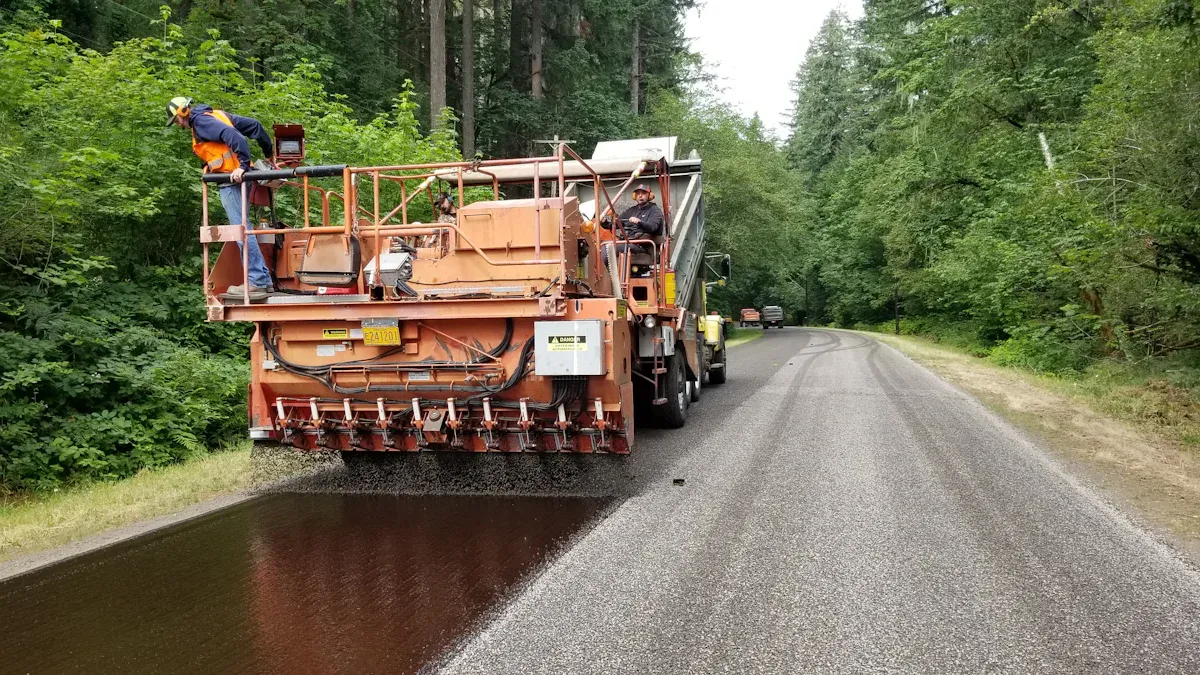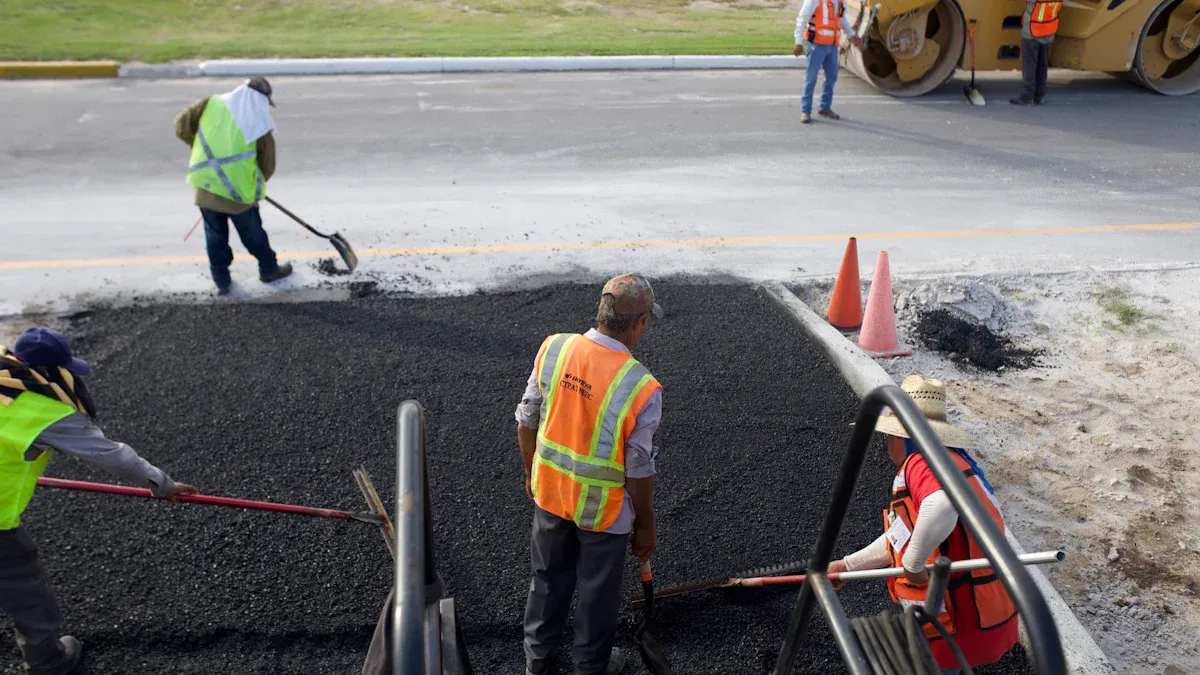
Taking care o f your asphalt mixing plant is very important. If you don’t maintain it, parts can wear out fast. This can cause poor performance and costly repairs. High heat, friction, and heavy loads can damage these parts. By acting early, you can make parts last longer. This also helps avoid sudden breakdowns. It keeps your plant working well and dependable.
Tip: Check parts often to spot damage early and save money.
Taking care of asphalt plant parts stops expensive fixes and failures.
Use tough, good-quality parts to make them last longer.
Check parts often to find damage early and keep it working well.
Teach workers how to maintain the plant for better safety and work.
Write down checks and fixes to avoid missing important jobs.

An asphalt mixing plant has many important parts. Each part has a job to keep things running smoothly. Some main parts are:
- Mixing drum: Mixes asphalt materials into the final product.
- Burner: Warms materials to the needed temperature.
- Conveyor belts: Move raw materials around the plant.
- Dust collector: Traps fine particles to keep the area clean and efficient.
These parts work together to make good asphalt. If one part breaks, the whole process can slow or stop.
Wear parts in the plant face tough conditions. Strong materials are used to make them last longer. Common materials include:
- High-strength steel: Used for mixing blades and liners because it resists damage.
- Heat-resistant alloys: Perfect for hot areas like the burner.
- Rubber and polyurethane: Used for seals and gaskets to stop leaks and cut vibrations.
Picking the right materials helps these parts handle hard work.
Strong wear parts keep the plant working well. They last longer and need fewer replacements. Good parts mean steady performance and better asphalt quality.
Note: Cheap parts might cost less now but can break often and cost more later.
Knowing what each part does and what it’s made of helps you care for your plant better.
Extreme heat and constant rubbing cause wear in asphalt plants. The mixing drum and burner face high temperatures, which weaken parts. Materials like aggregates rub against mixing blades, speeding up damage. For instance, holes in screens let bad materials through. This can harm aggregates and other parts. Checking samples and screens often keeps quality high and reduces strain.
Tip: Watch screening data to catch problems early and save costs.
Rough materials, like sand and gravel, wear down key parts fast. These materials scrape and grind parts like mixing arms and lining plates. Without care, this can cause cracks or even breakage. Fixing and replacing worn parts on time prevents bigger issues. Solidified materials in tanks can make wear worse. Cleaning tanks often stops this problem.
| Factor | Description |
|---|---|
| Maintenance Practices | Fix and replace worn parts like lining plates and mixing arms regularly to avoid damage. |
| Environmental Conditions | Clean tanks often to stop solid materials from causing problems. |
How you run the plant affects how long parts last. Overloading or running too fast stresses parts. Check the material door often to stop jams that cause damage. Before starting, look for objects in tanks to avoid breakdowns. Turn off power during maintenance to stay safe and protect parts.
Note: Train workers on good practices to reduce wear and keep the plant running longer.
Taking care of your plant's parts helps them last longer. Checking and fixing wear parts often stops small issues from growing. For example, cleaning the mixing drum and changing old blades keeps it working well. This avoids cracks or damage that can ruin the equipment.
Lubricating moving parts is also very important. It reduces rubbing, which causes damage over time. Well-lubricated parts don’t overheat or break easily. This simple step makes your plant's parts stronger and last longer.
Tip: Keep a maintenance log to track checks and fixes. This helps you stay on schedule and not miss important tasks.
Breakdowns can stop work and cost a lot to fix. Regular care helps you find problems early and fix them fast. For example, looking for cracks or worn mixing arms can stop big failures during work.
Many companies show how planned care helps. For instance:
- Boeing uses tools to find problems early.
- Their regular care plan cuts down on surprise repairs.
- Fixing things on time keeps their machines running well.
You can do the same for your plant. Spending time on care now saves money later and keeps your plant working smoothly.
Note: Breakdowns can hurt your budget and delay projects. Regular care helps avoid these problems.
Regular care keeps your plant making good asphalt. Worn parts, like broken screens or blades, can lower quality. Checking and replacing these parts keeps your asphalt even and reliable.
A well-cared-for plant also works better. It uses less energy and runs at full power. This saves money and improves performance. For example, cleaning the dust collector stops clogs and keeps materials moving smoothly.
Reminder: Good asphalt builds trust with clients. Maintenance is the key to this success.

Check your asphalt mixing plant often for visible damage. Look for cracks, dents, or bent parts on the mixing drum, blades, or conveyor belts. These damages make parts weaker and less effective. For example, a cracked blade won’t mix materials evenly, causing bad asphalt. Bent conveyor belts can mess up material flow and slow down work.
Focus on areas that handle heavy stress, as they get damaged faster. If you see any problems, fix or replace the parts right away. Ignoring these signs can lead to bigger problems, li ke broken parts or expensive delays.
Tip: Use a flashlight to find small cracks or hidden damage.
If your plant slows down or makes poor asphalt, parts may be worn out. Worn mixing blades might not mix materials well, causing uneven asphalt. A clogged dust collector can block airflow, hurting heating and slowing production.
Watch how your plant performs. Compare current output to older data to spot drops in efficiency. Fixing these problems early keeps your plant running smoothly.
Reminder: Write down production data to track performance changes over time.
Weird noises or shaking often mean parts are worn or out of place. Grinding, squealing, or rattling sounds could come from worn bearings, loose bolts, or damaged belts. Too much shaking might mean issues with the mixing drum or motor. These problems can hurt performance and safety.
Check any strange sounds or shaking right away. Tighten loose parts, replace damaged ones, and check alignment. Regular care stops these problems from getting worse.
Alert: Don’t ignore strange noises. They often warn of bigger issues.
Having a regular inspection plan keeps your plant in good shape. Checking parts often helps find problems early. This stops expensive repairs and delays. Look at belts, drums, and mixers daily. Clean off dust and dirt to prevent buildup. Weekly checks should include fluid levels, sensors, and calibrations. Monthly tasks should involve oiling parts, cleaning filters, and replacing worn items.
| Maintenance Type | How Often | What to Do |
|---|---|---|
| Daily Checks | Every day | Look at belts, drums, and mixers for damage. Clean off dust and dirt. |
| Weekly Inspections | Once a week | Check fluids, sensors, and calibrations for proper function. |
| Monthly Service | Once a month | Oil moving parts, clean filters, and change worn-out items. |
Regular checks make sure no important part is missed. This helps avoid sudden breakdowns and keeps the plant running well.
Tip: Use a checklist to stay on track and finish all tasks.
Using strong replacement parts keeps your plant working well. Materials like high-strength steel and heat-resistant alloys last longer. Cheaper parts may cost less now but wear out quickly. This means you’ll need to replace them more often, costing more over time.
Good-quality parts work better and break less often. For example, strong mixing blades and liners improve asphalt quality and last longer. Always buy parts from trusted sellers to ensure they fit and work properly.
Reminder: Spending more on good parts saves money later by reducing repairs and improving plant performance.
Training workers helps them take better care of the plant. Important tasks like greasing, checking silo walls, and adjusting trunnions keep things running smoothly. Hands-on training shows workers how to handle plant parts and why maintenance matters.
Training should include safety, plant processes, and how parts work. For instance, teaching workers to use automatic oiling systems can save time and reduce wear. Proper oiling makes parts last longer and lowers costs.
Note: A trained team keeps the plant safe and running well, avoiding costly mistakes.
Taking care of your asphalt mixing plant keeps it running well. Regular checks on wear parts make them last longer. This also prevents expensive repairs and sudden breakdowns. Good maintenance ensures your asphalt stays high-quality, which clients appreciate. Using strong parts and sticking to a care plan protects your plant’s efficiency and profits.
Reminder: A cared-for asphalt mixing plant leads to lasting success.
Check parts every day for visible damage. Do deeper checks weekly. Monthly care keeps all parts in good shape. Regular checks stop big problems and keep the plant working well.
Tip: Use a checklist to remember all important inspections.
Watch for cracks, dents, or bent parts. Odd sounds, shaking, or lower output also show wear. These signs mean parts need fixing or replacing soon.
Reminder: Fix problems quickly to keep the p lant safe and working.
Lubrication stops parts from rubbing too much. It keeps them cool and reduces damage. This makes parts last longer and work better. Without it, parts can break and cost more to fix.
Note: Always use the right lubricant for your machine.
No, cheap parts break faster and need replacing often. Strong parts last longer and help the plant work better. Spending more now saves money later by avoiding repairs.
Alert: Buy parts from trusted sellers for better quality.
Training teaches workers how to care for parts properly. They learn to follow schedules and use tools the right way. A trained team makes fewer mistakes and keeps the plant running well.
Emoji Reminder: 🛠️ Trained workers = A better working plant!